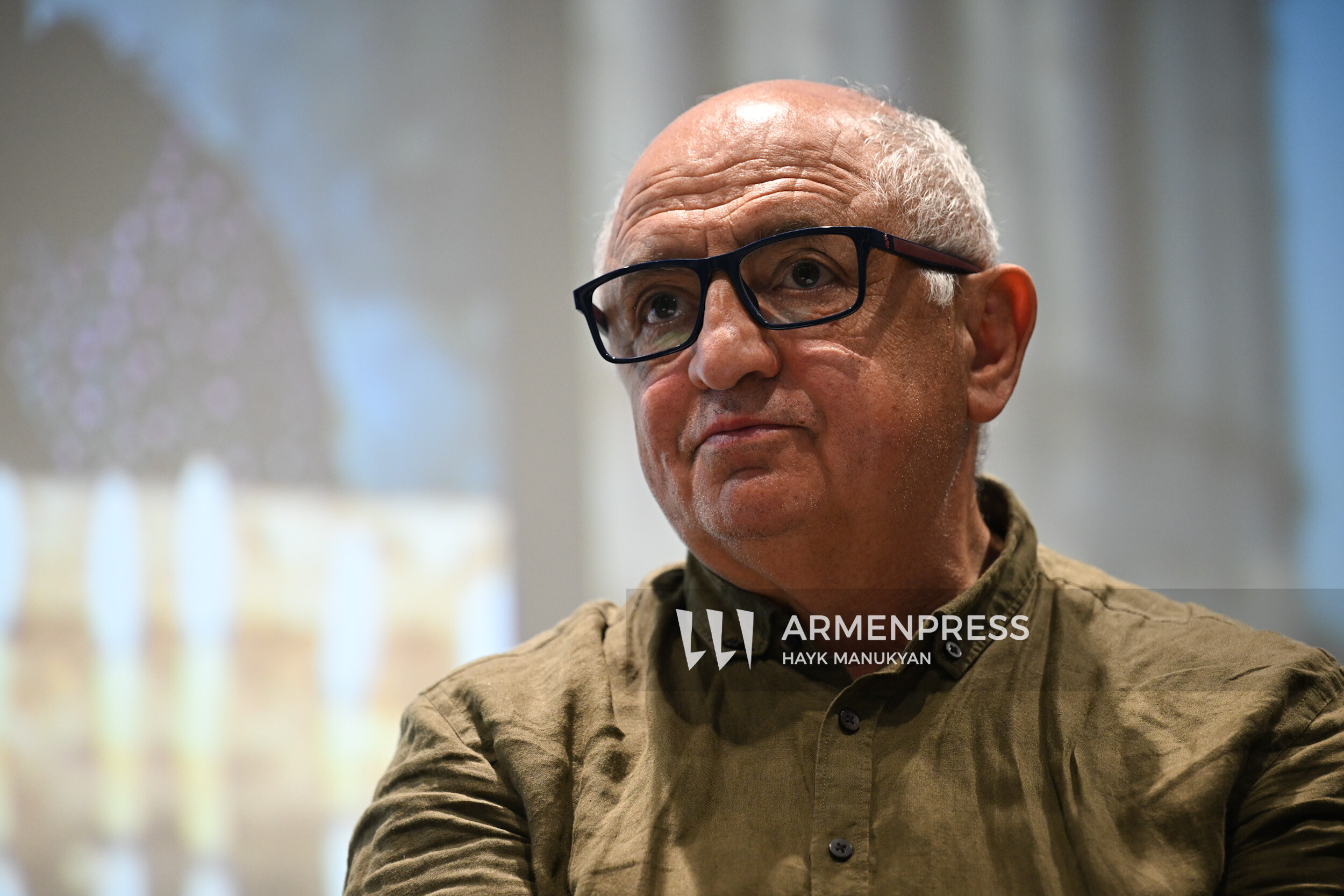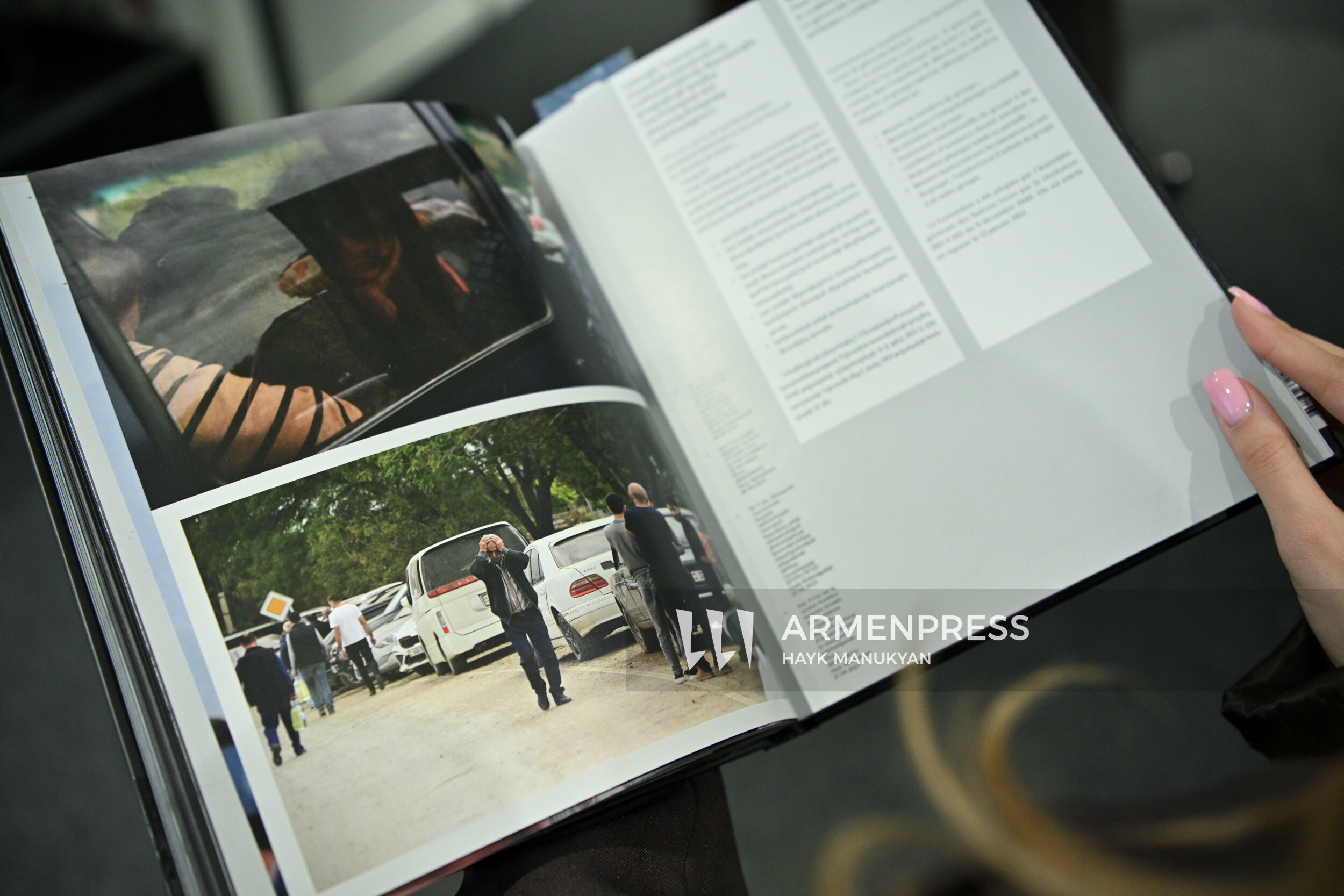Swiss-Armenian photographer Demir Sönmez documents 44-day war in "The Wounded Eagle"
6 minute read

The 44-Day War, human stories, pain, waiting for hope, light. In the Armenian-French book The Wounded Eagle by Swiss-Armenian documentarian-photographer Demir Sönmez, the author captures the struggle and loss of the people of Nagorno-Karabakh.
Through written notes and comments accompanying his photographs, he transports the reader to the battlefield and the streets of Stepanakert, Shushi, Martuni, Martakert.
Sönmez, who was born in Karin, discovered his Armenian roots later in life. He presented this valuable book-album in Armenia during the "Genocide Week" event initiated by the Newmag publishing house and the Armenian General Benevolent Union, dedicated to the 110th anniversary of the Armenian Genocide.
In an interview with Armenpress, the photographer shared that learning about his Armenian heritage made his life even more difficult.
“I became involved in events related to the Armenian Genocide, which made my life more complicated. I’ve been in prison since 1978. Before my imprisonment, I was involved in political struggle. After being released, I turned to journalism and photography, focusing on social and political topics. That’s why I was deported from Turkey in 1990. In Switzerland, I returned to photography,” he said.
Demir Sönmez covers issues of human rights, social justice, and diversity. He emphasizes that his book dedicated to the 44-day war holds documentary value—it is a testament to memory, a tribute to the victims, and a call for sobriety for all humanity.

He has previously worked in Iraq and Syria. The idea of documenting the most significant events of the 2020 Nagorno-Karabakh war came from his friend, the late Raffi Hermon Araks, editor-in-chief of the Turkish-language news and publications service of the Armenpress state news agency.
“He called me and said, ‘You cover events in different countries—don’t you want to cover ours?’ So I decided to come, despite the difficult times and the pandemic. I came because I wanted to be with my people and make their voice heard,” Sönmez recalled.
The book was initially published in English and French. Four of its photographs received prestigious awards and were exhibited in various galleries across Switzerland for about a year. Encouraged by this success, Sönmez came to Yerevan in 2022 and published the book in Armenian.
The new edition, presented to the public by Newmag, includes not only Sönmez's war-themed photographs but also images provided by Armenpress (photographer: Hayk Manukyan), documenting the 2023 events: the exodus of Armenians from Nagorno-Karabakh and the arrival of Artsakh residents in Armenia.

"Our colleague, our compatriot, has done a very important and lasting work. I believe such works play a significant role in preserving historical events from the oblivion of time. The Armenpress state news agency also recognizes its responsibility to document historical events and pass them on accurately to future generations. With that sense of duty, we responded and proudly contributed to the publication of this book," emphasized Narine Nazaryan, director of the Armenpress state news agency.
According to Nazaryan, the agency's creative team documented the process in border settlements Kornidzor, Goris, and Vayk, where Armenian state structures quickly organized the reception and registration of forcibly displaced people from Nagorno-Karabakh. These valuable photos and video footage were transferred to the Armenpress archives.
"So that future generations would know that in the 21st century, the so-called advanced world also witnessed genocides and mass deportations," she said.
Artsakh photographer Areg Balayan was also on the ground during the events of 2020, capturing what he could. Often, he was able to work because the locals knew and trusted him. He believes that only 15 or 20 percent of what truly happened was photographed.
"I am a documentary filmmaker, and I deeply understand and value the role of documentation. Although I’ve recently started to question whether it’s as important as we think, or perhaps in the future it will prove even more important, the fact that something factual is being created is already meaningful," Balayan emphasized, adding that the resolution of such issues does not rest solely on the shoulders of documentary work.
